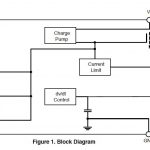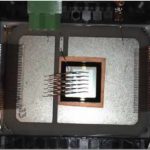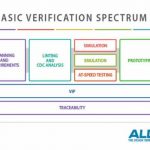You are currently viewing SemiWiki as a guest which gives you limited access to the site. To view blog comments and experience other SemiWiki features you must be a registered member. Registration is fast, simple, and absolutely free so please,
join our community today!
WP_Term Object
(
[term_id] => 157
[name] => EDA
[slug] => eda
[term_group] => 0
[term_taxonomy_id] => 157
[taxonomy] => category
[description] => Electronic Design Automation
[parent] => 0
[count] => 4327
[filter] => raw
[cat_ID] => 157
[category_count] => 4327
[category_description] => Electronic Design Automation
[cat_name] => EDA
[category_nicename] => eda
[category_parent] => 0
[is_post] =>
)
Power protection chips are widely used these days to protect sensitive circuitry from over-voltage and over-current stress. However, these workhorse chips are often subjected to extraordinary thermal stress themselves and need to be protected from burning up – literally.
Power protection chips work like electronic fuses,… Read More
In the pages of SemiWiki, we are usually talking about what to do with billions of really small transistors – for a change of pace today, we’ll discuss what to do with a few really big ones. Mentor Graphics has just announced their latest MicReD platform for thermal testing of IGBTs, experiencing a resurgence (pun intended) thanks… Read More
Design starts are critical to the growth of the semiconductor industry so enabling them is a common theme on SemiWiki. One thing we have not covered in detail is multi-project wafer services (MPW) which is the equivalent of ride sharing through the initial mask and wafer process. Larger semiconductor companies already do this … Read More
A common SoC design methodology in current use starts with preparation of the physical floorplan — e.g., block/pin placement, global clock domain and bus signal planning, developing the global/local power distribution (and dynamic power domain management techniques). Decoupling capacitor estimated densities and… Read More
Rebooting EDAby Bernard Murphy on 05-23-2016 at 7:00 amCategories: Ansys, Inc., EDA
In the 35 years since commercial EDA went mainstream a lot of advances have been made but the fundamental architecture and even the philosophy of tooling have really not advanced at all. Tools are designed around individual tasks – analysis and optimization within a specific domain – under the assumption that variability within… Read More
Markets work when consumers of a widget don’t feel there is significant differentiated value in making their own and would rather get lowest possible cost from experienced widget makers who can amortize their investment over high-volume sales to many customers. But that changes when a large consumer finds they can increase differentiated… Read More
This week I attended the UpWest Labs event in San Francisco. UpWest Labs provides seed funding and incubation for a wide range of domains including Enterprise Software, Internet of Things, Infrastructure Technologies, Artificial Intelligence, Consumer Applications, Drones, Cyber Security, Augmented Reality / Virtual … Read More
Aldec tools and services have long been associated with FPGA designs. As FPGAs have evolved toward more RTL-based designs, the similarities between a modern FPGA verification flow and an ASIC verification flow often leave them looking virtually the same. … Read More
If you plan on visiting Solido (the world leader in EDA software for variation-aware design of integrated circuits) at the Design Automation Conference next month for a demonstration of Variation Designer, register online now and get an autographed copy of “Mobile Unleashed”. Such a deal!
Solido Variation Designer is used by… Read More
Even though design management systems are gaining popularity as a way to manage design data growth, they actually contribute to the problem of exploding data size. What we already know is that a linear increase in die size causes exponential growth in chip area, and that smaller feature sizes compound this effect in the same way.… Read More









AI RTL Generation versus AI RTL Verification